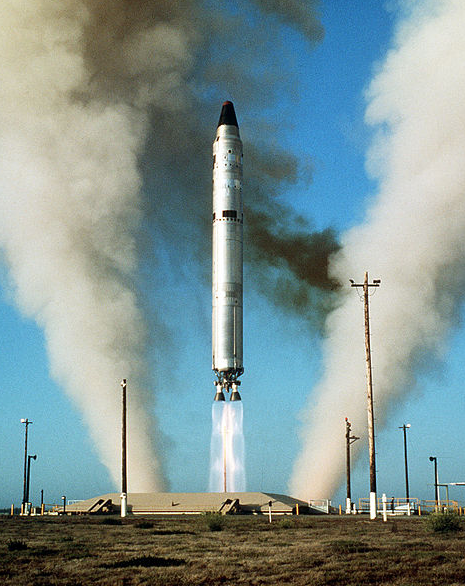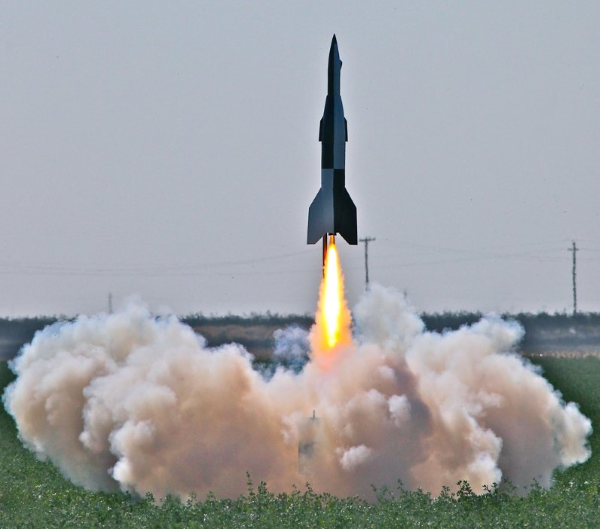The term ICBM stands for Inter-Continental Ballistic Missile, which is a fancy way of saying it’s a missile that’s capable of traversing long distances in a very short period of time.
ICBM’s are nothing new.
The US has had an arsenal of them for well over 50 years at this point, all ready to go at a moment’s notice.

What you might not have realized is, during World War 2, the Nazi’s came dangerously close to developing their own ICBM’s.
In an effort to shift the outcome of the war in his favor, Adolf Hitler authorized the development of a wide array of experimental weapons.
Related Article – 5 Best Low Time Pilot Jobs With 250 Hours
Those included things like the V-1 and V-2 rockets, the flying wing, nuclear weapons, and the Inter Continental Ballistic Missile, or ICBM.
While the V-2 rocket became a household name by the end of the war, ICBM’s were still in their very early stages of development.
Various tests of varying ranges were sometimes successful, and more often, unsuccessful.
The reason behind this is simple; the technology just wasn’t quite there yet.
With that said, Hitler realized that in order to defeat the enemy, he needed to ‘reach out and touch them’ in a way never seen before in conflict.
Developing an ICBM would do just that…
The German ICBM Program
While it’s a really long story, the short version goes like this…
In order to bomb the British effectively, the Nazi’s realized that they needed to put more effort into their V weapons platform program.
The V-1 rocket, and later V-2 rocket, were a weapons platform that used a single-stage ballistic missile.
Interesting side note: The V actually stands for ‘Vengeance’. The V-2 rocket was also sometimes referred to as the Vergeltungswaffe 2, which loosely translates to ‘Retribution Weapon 2’).
It could reach the British coast in less than 30 minutes, and deliver a 1,000 kg warhead into major cities like London.
It’s been said that over 1,000 of the V weapons platform rockets were fired at England (specifically London) over the course of the war.
The Brits were essentially defenseless against their use, and would repeatedly have to retreat to underground bunkers to survive the onslaught.
However, because of the limited range of the V-2 (about 200 miles, or 320 kilometers), it was ineffective at hitting targets in most of Russia, and completely put North America and the United States in particular, out of range.
In comes the ICBM…
Using a mixture of alcohol and liquid oxygen as its fuel source, the first ICBM precursor that was developed by the Germans in World War 2 was known as the A4 rocket.
Instead of the paltry 1,000 kg warhead that the V-2 rockets could carry, the A4 could carry a 1654 lb. warhead to its target.
Related Article – Instrument Proficiency Check (IPC): 4 Things You Need To Know
The problem was, it actually had less of a range than the V-2.
Of course, this didn’t make it a true Inter Continental Ballistic Missile.
Realizing the importance of range and payload, it prompted the development of the A9 missile.
The A9 was essentially a beefed-up version of the A4, and included wings to help maximize the range.
The Germans realized during the testing of the A4 that, once the fuel supply was exhausted, the rocket / warhead would fall out of the sky like a brick.
Adding wings to the A7 increased the range substantially, allowing it to essentially glide to its target.
This increased the effective range to double the distance, or around 450 miles.
The addition of wings also allowed the missile to steer towards its target more effectively, which in turn increased its accuracy dramatically.
Additionally, one of the biggest problems with the original A4 rocket was the impact it had on its intended target.
Because it essentially plummeted towards the ground, once it hit its target most of the blast was absorbed by the ground.
The A9, on the other hand, could explode with a much larger effect.
With all of this said, the A9 was incapable of reaching anything beyond 450 – 500 miles, making it by definition NOT an Inter-Continental Ballistic Missile.
Over Before It Even Started
It wasn’t until around July of 1941 that one of Hitlers top brass made a suggestion that they develop a missile capable of reaching the United States.
Appropriately nicknamed the ‘American Rocket’, this was Nazi Germany’s first concerted effort at making a missile capable of travelling anywhere in the world in under an hour.
The idea was simple; develop a rocket that could carry an A9 missile on top of it.
Essentially, this would have been 2 rockets stacked one on top of the other, allowing for a range of 2,500 – 3,000 miles.
This would have easily put the US east coast within range.
However, the project never went beyond the drawing board.
Most German scientists at the time thought that the project would be too costly, and too technologically challenging.
Related Article – Airline Transport Pilot Certificate (ATP): 4 Things You Need To Know
Conclusion
The German ICBM program never left the ground (pun-intended), and we all know how the war turned out for the Nazi’s.
The scary thing is, had the Nazi’s actually developed the ICBM and nuclear weapons before the end of the war, it would have been a huge game changer.
I mean, had they had the capability of delivering nuclear weapons to our nation’s capital, it’s of this authors opinion that Hitler wouldn’t have thought twice about using them.
Luckily, history was on our side.
References
https://en.wikipedia.org/wiki/V-2_rocket
https://en.wikipedia.org/wiki/Intercontinental_ballistic_missile
See Also:
Controlled Flight Into Terrain (CFIT) Explained
Choosing A Flight School Near You

